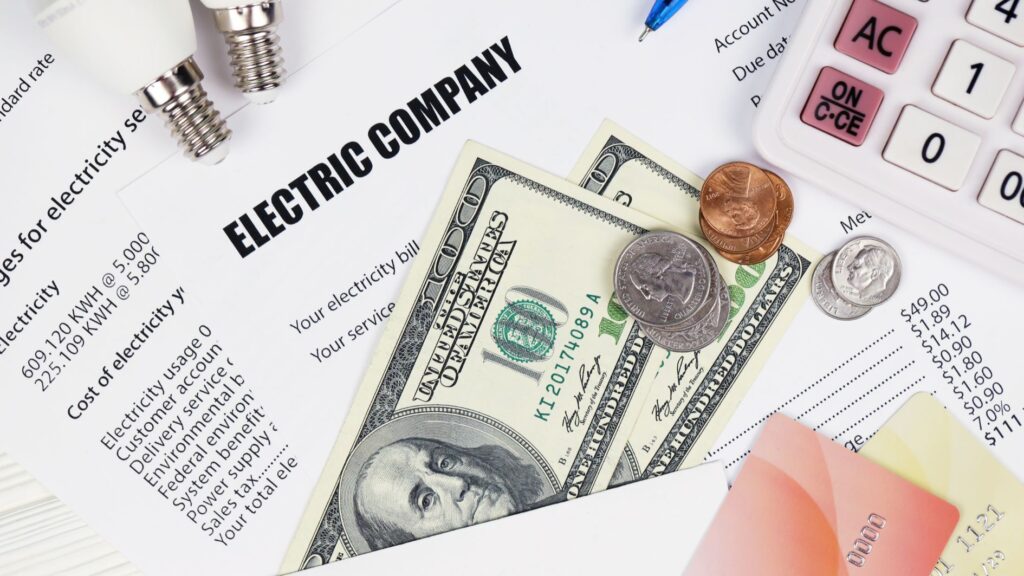Image source: Canva.com
Net Energy Metering (NEM) has been instrumental in encouraging the adoption of solar energy by allowing homeowners and businesses to earn credit for excess energy their solar panels produce. In California, the transition to NEM 3.0 has introduced some changes to the structure of these incentives. While the adjustments may seem complex at first glance, there are still significant financial benefits for those who invest in solar energy under this new framework. Here’s an in-depth look at how NEM 3.0 works and the financial advantages it offers.
1. Reduced Energy Bills

One of the primary financial benefits of installing a solar energy system under NEM 3.0 is the substantial reduction in energy bills. Solar panels allow homeowners to generate their own electricity, offsetting the cost of power drawn from the grid. Many homeowners can achieve significant savings over time with efficient use and proper system sizing.
While the export compensation rates under NEM 3.0 are slightly lower than in previous iterations, the savings from self-consumption – using the solar power you produce – remain robust. By consuming energy during daylight hours and strategically using high-energy appliances, homeowners can maximize their reliance on solar power and reduce dependence on more expensive grid electricity.
2. Time-of-Use (TOU) Rates and Solar Storage Synergy

NEM 3.0 emphasizes the importance of time-of-use (TOU) rates, which vary based on the time of day. Electricity is more expensive during peak demand periods, typically in the late afternoon and evening. Solar systems paired with battery storage can help homeowners store excess energy generated during the day and use it during these peak hours, effectively reducing their reliance on costly grid power.
By optimizing energy storage and usage patterns, homeowners can not only save on electricity costs but also benefit from higher compensation rates when selling stored energy back to the grid during peak periods.
3. Increased Return on Investment (ROI) Over Time

Solar panel systems represent a long-term investment that continues to pay off over decades. Under NEM 3.0, even with adjusted export rates, the ROI remains attractive due to:
- Decreasing costs of solar panels and batteries: As technology advances, the cost of solar systems and storage solutions continues to decline, making it more affordable to invest in solar energy.
- Electricity rate increases: Grid electricity prices are likely to rise over time. By generating your own power, you protect yourself against these increases and improve your long-term savings.
- Federal and state incentives: Homeowners can take advantage of tax credits and rebates to reduce the upfront cost of installation, further enhancing their ROI.
4. Environmental Benefits with Financial Value

Switching to solar power under NEM 3.0 doesn’t just help save money – it also reduces your carbon footprint. Over time, as governments and corporations prioritize clean energy initiatives, environmental benefits may translate into additional financial rewards, such as renewable energy credits (RECs) or participation in community sustainability programs.
5. Home Value Appreciation

Homes equipped with solar energy systems often see increased market value. Potential buyers are willing to pay more for a property that comes with lower operating costs and the added benefit of renewable energy. Under NEM 3.0, this advantage is still valid, particularly for homes equipped with modern solar and storage solutions that align with TOU rate structures.
6. Resilience and Energy Independence

Battery storage systems paired with solar panels provide a level of energy independence that can be financially advantageous during power outages or grid disruptions. Avoiding downtime for businesses or ensuring uninterrupted power for homes can prevent unexpected costs and enhance overall peace of mind.
Tips to Maximize Financial Benefits Under NEM 3.0
- Optimize system size: Work with a certified solar installer to design a system tailored to your energy needs and TOU rate schedules.
- Invest in energy storage: Pair your solar panels with a battery system to store excess power and use it during peak demand periods.
- Leverage incentives: Take full advantage of federal tax credits, state rebates, and local incentives to reduce upfront costs.
- Monitor and maintain: Regular maintenance and monitoring can help ensure your system operates efficiently and continues to deliver savings.
Designing Net Billing Tariffs

When the Net Billing Tariff takes effect, it will establish the following rules:
New Rate Plans
Homeowners who get solar panels must sign up for “highly differentiated” time-of-use rate plans, where electricity is very expensive during peak usage times and much cheaper during off-peak times.
Energy Credits
Utilities will offer significantly reduced credits for excess energy, averaging about 5 to 6 cents per kilowatt-hour (kWh) compared to the retail rate, which averages around 30 cents/kWh. These credits are determined by the most recent Avoided Cost Calculator (ACC), a complex tool used to calculate the cost a utility avoids for each kWh of electricity it doesn’t buy when rooftop solar panels provide the energy instead.
ACC Plus Incentive
PG&E and SCE residential customers who sign up for net billing will have access to a new incentive called the ACC Plus, which adds a bit of value to each kWh of exported solar energy, resulting in slightly better bill savings.
Legacy Period
The value of energy credits and ACC Plus incentives will be locked in for 9 years after signup, following a schedule based on the state’s most current ACC. After the legacy period, the customer will receive energy credits based on values from the then-current ACC.
Low-Income Customers
Residential customers of PG&E and SCE who qualify for the CARE and FERA low-income programs will receive a larger ACC Plus incentive designed to allow a simple payback of their solar installation costs within 9 years.
System Oversizing
A net billing customer can install a system that produces up to 150% of their previous 12 months’ energy usage, provided they attest that they will increase their usage up to that amount in the next 12 months, such as by converting natural gas appliances to electric or purchasing an EV to charge at home.
Monthly Bill Payment
A net billing customer will be responsible for paying all monthly charges on their utility bill, with any additional credit earned from exported solar energy carried over to the next month.
Annual True-Up
Once per year, on the customer’s “true-up” date, any remaining carryover credits will be credited at the “Net Surplus Compensation Rate,” published monthly by PG&E, SCE, and SDG&E.
Current NEM Customers
Customers currently receiving credits under the NEM 1.0 and 2.0 programs will continue to receive those credits for 20 years after their original interconnection date. Once this period ends, they will not receive the ACC Plus or be covered under the legacy period. Instead, they will be subject to the current ACC values for exported solar energy.
By understanding these aspects of the net billing program, you can make informed decisions about your solar installation and maximize your savings.

Despite changes introduced under NEM 3.0, the financial benefits of investing in solar energy remain substantial. From reduced energy bills to increased home value and energy independence, solar power continues to offer a strong economic case for adoption. By understanding the new rules and leveraging technology like battery storage, homeowners and businesses can maximize their savings and contribute to a more sustainable energy future.





